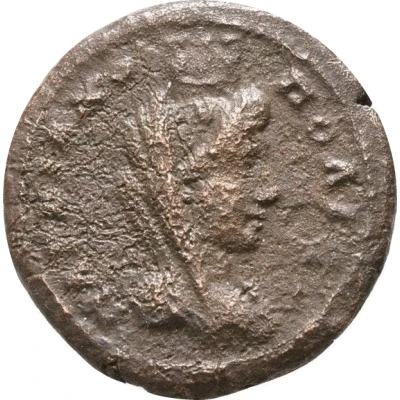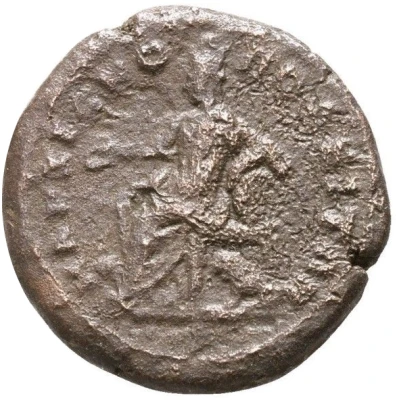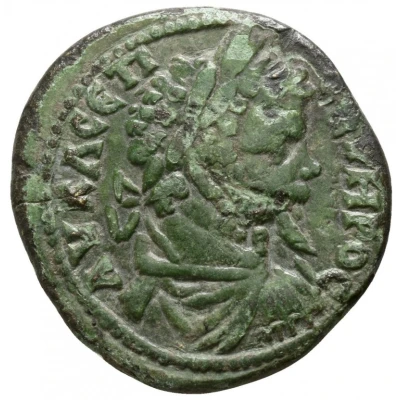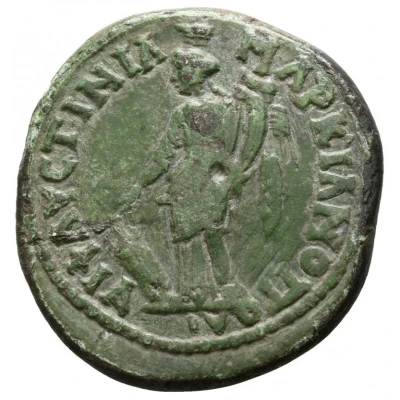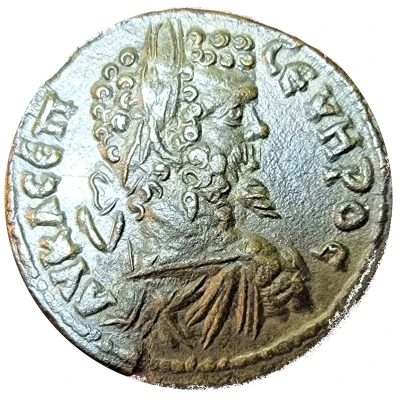
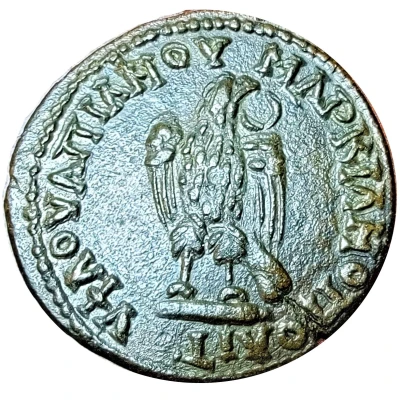

© RonM (CC BY-NC)
Æ - Septimius Severus MAΡKIANOΠOΛITΩN; Marcianopolis
| Bronze | 2.3 g | 16 mm |
| Issuer | Marcianopolis (Moesia Inferior) |
|---|---|
| Emperor | Septimius Severus (Lucius Septimius Severus) (193-211) |
| Type | Standard circulation coin |
| Years | 193-211 |
| Composition | Bronze |
| Weight | 2.3 g |
| Diameter | 16 mm |
| Shape | Round (irregular) |
| Technique | Hammered |
| Orientation | Coin alignment ↑↓ |
| Demonetized | Yes |
| Updated | 2024-10-06 |
| Numista | N#138012 |
|---|---|
| Rarity index | 89% |
Reverse
Eagle standing facing, head right
Lettering: MAΡKIANOΠOΛITΩN
Interesting fact
The coin , which features Septimius Severus (MAΡKIANOΠOΛITΩN; Marcianopolis) from Marcianopolis (Moesia Inferior) made of Bronze weighing 2.3 g, is a rare example of a Roman coin that was issued during the reign of Septimius Severus (193-211 AD). It's interesting to note that Septimius Severus was a powerful and influential Roman emperor who ruled during a time of great turmoil and change in the Roman Empire. He was known for his military campaigns and his efforts to restore stability to the empire, and his reign marked the beginning of the Crisis of the Third Century, a period of political instability and conflict that lasted for over a century. It's also worth noting that the coin is made of bronze, which was a common material used for coins during this time period. The use of bronze for coins was a practical choice, as it was a durable and affordable material that could be easily produced and distributed. However, it's worth noting that the use of bronze for coins also had symbolic significance, as it was associated with the goddess Venus, who was revered as the patron of Rome. Overall, the coin is a fascinating piece of history that offers a glimpse into the political, social, and economic conditions of the Roman Empire during the reign of Septimius Severus.
